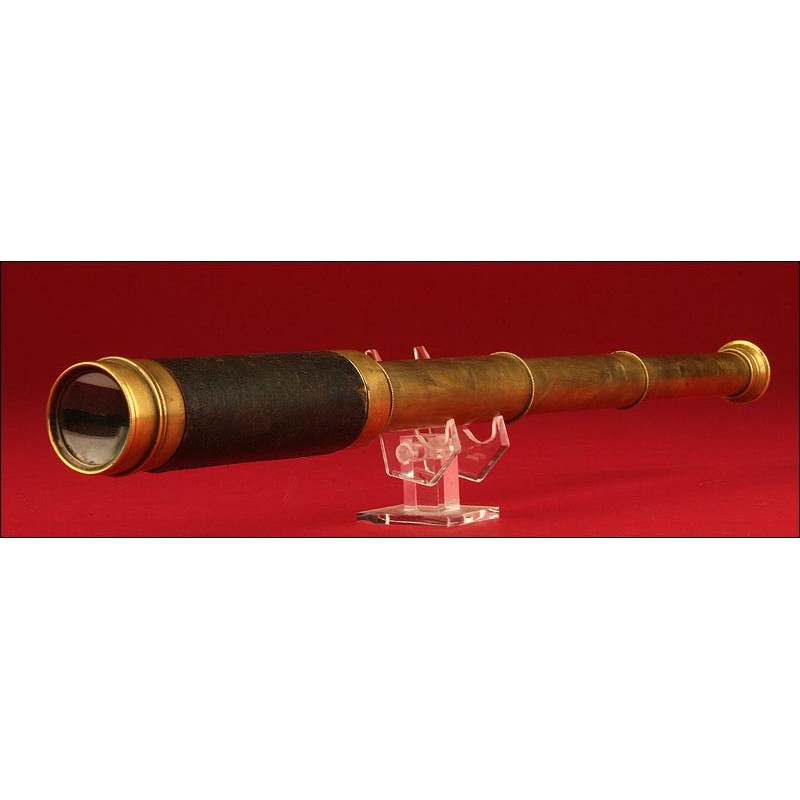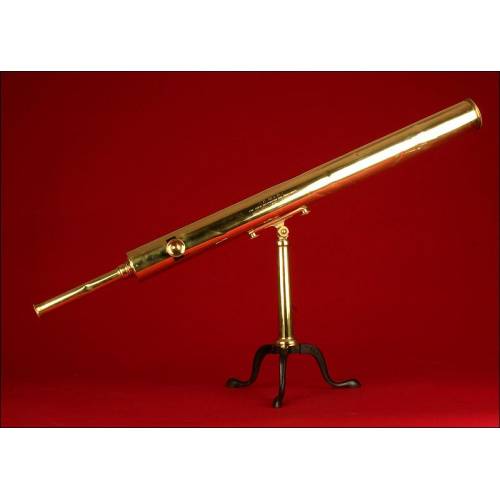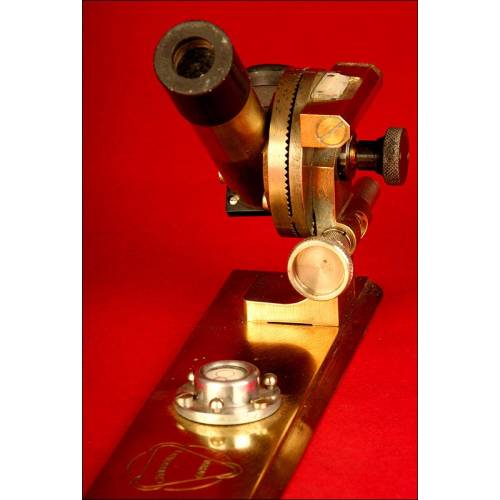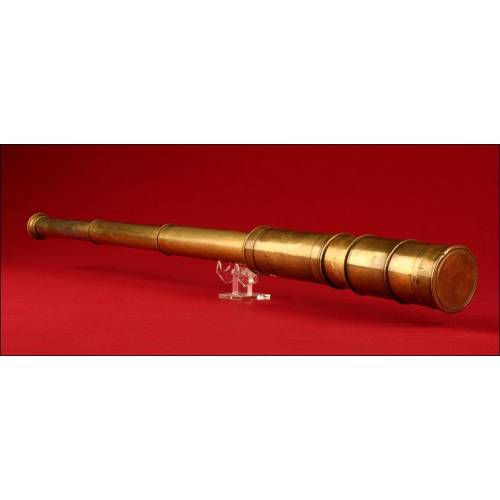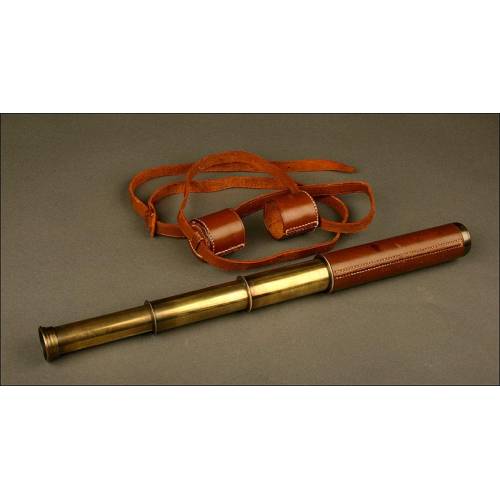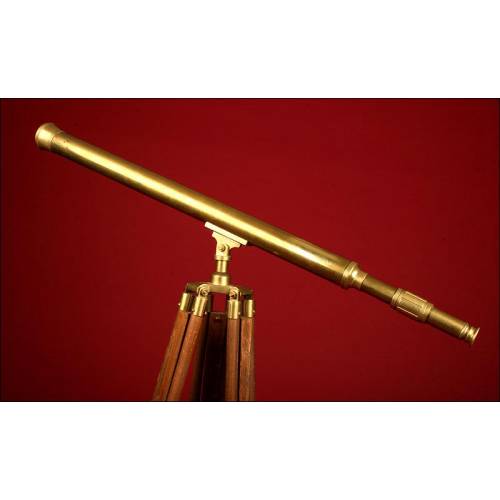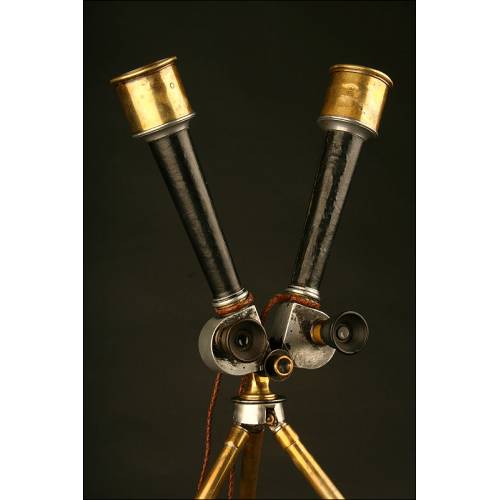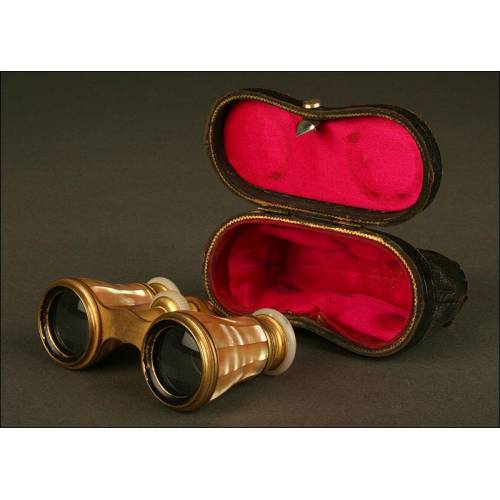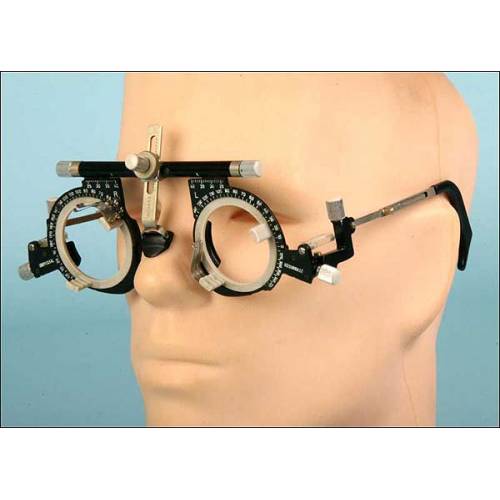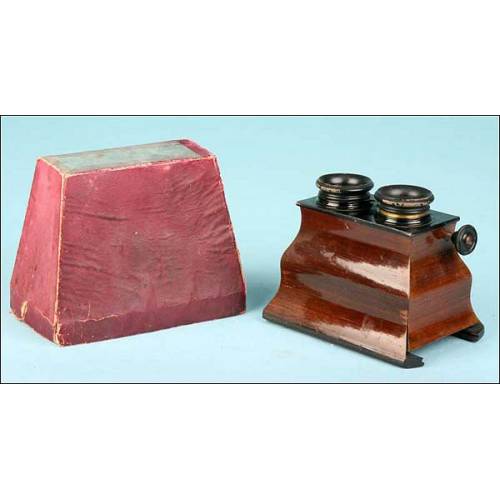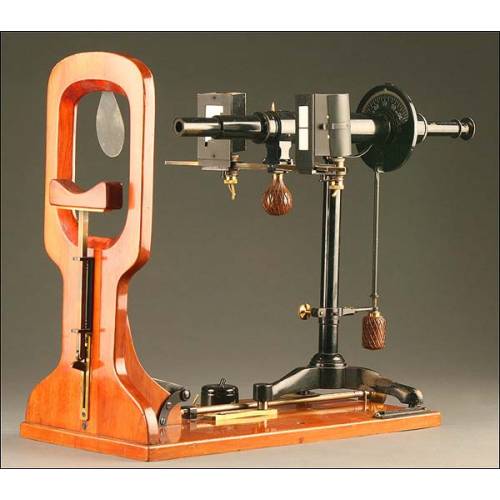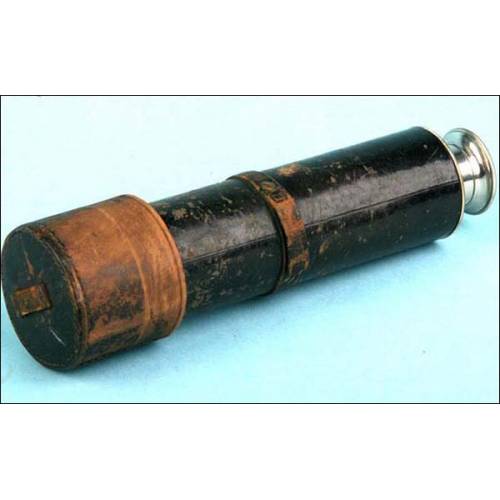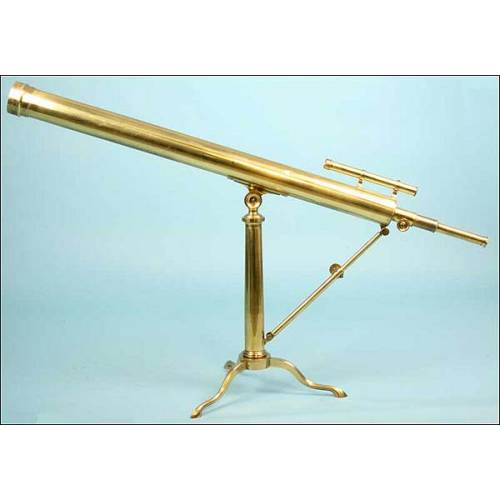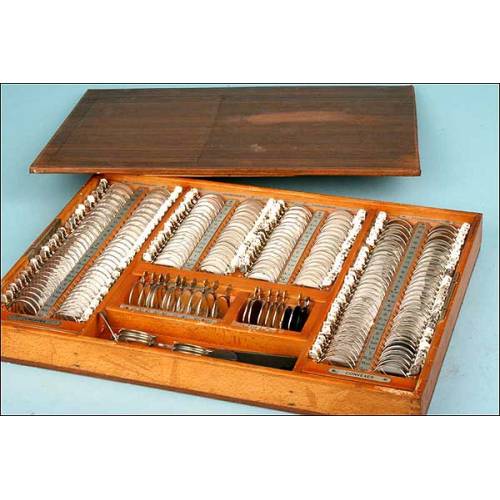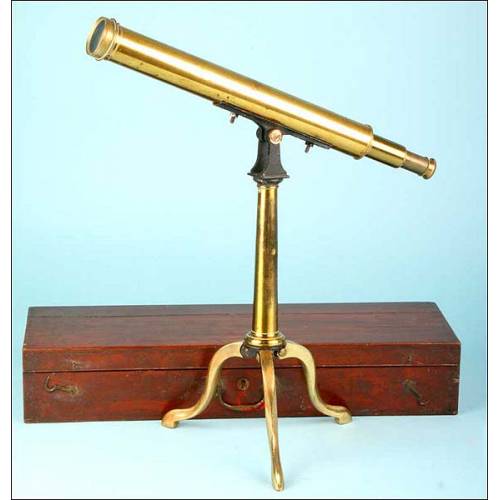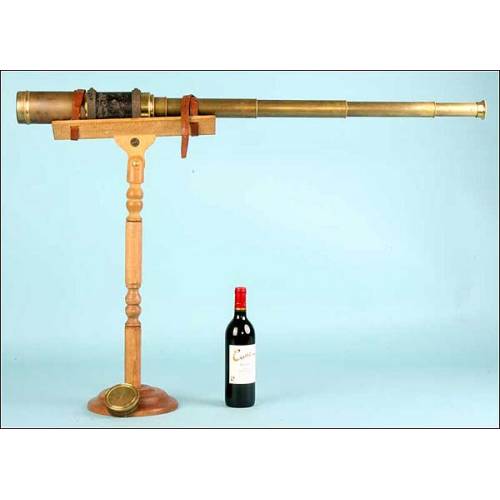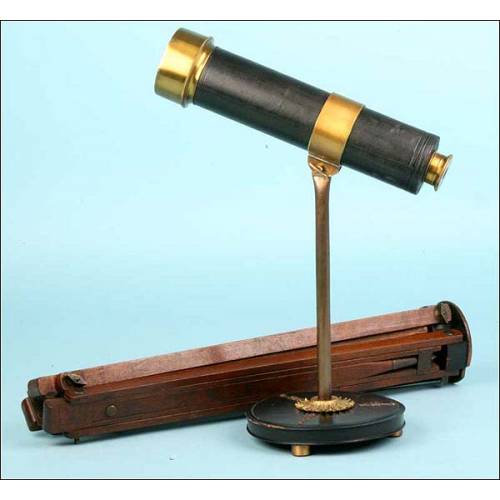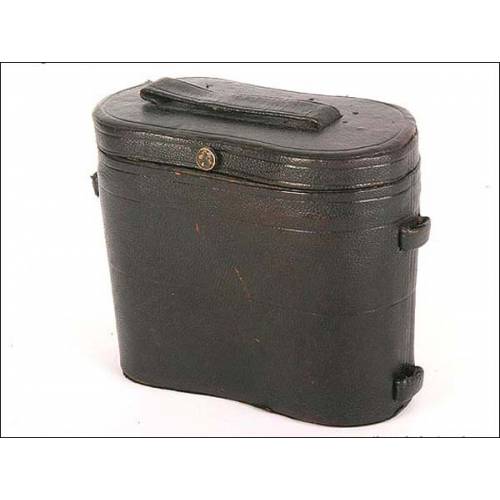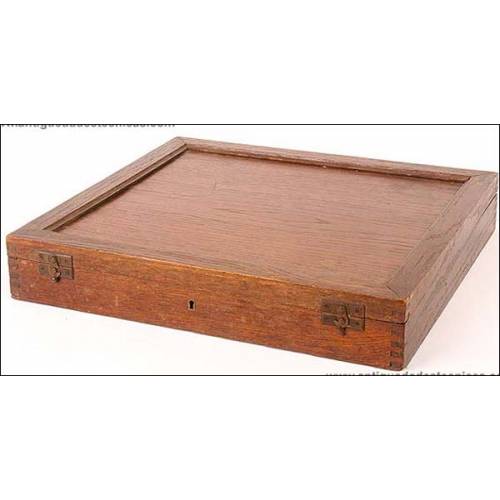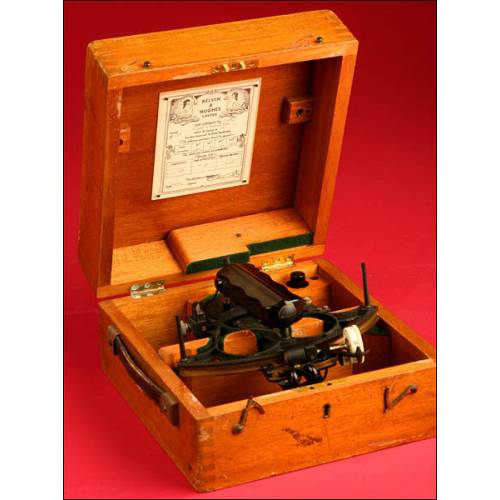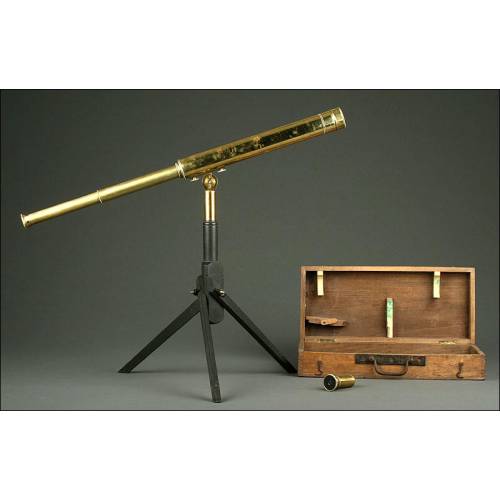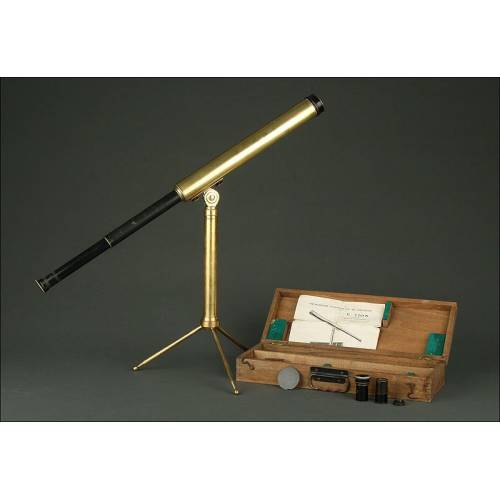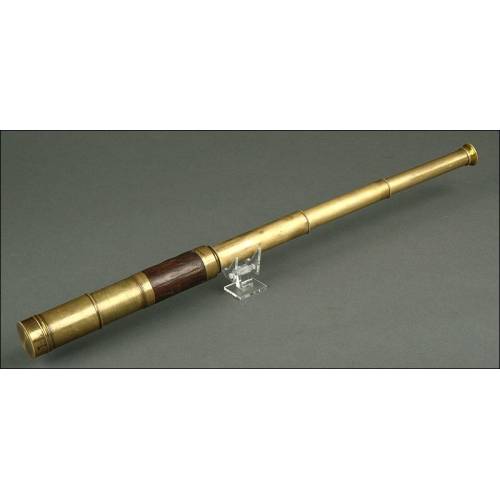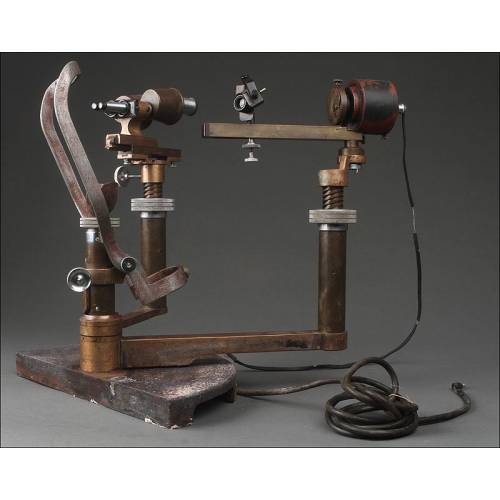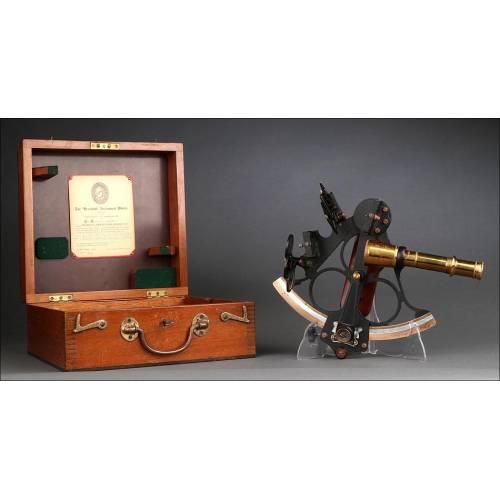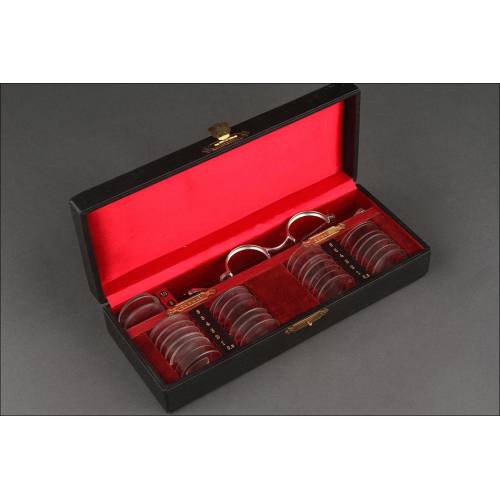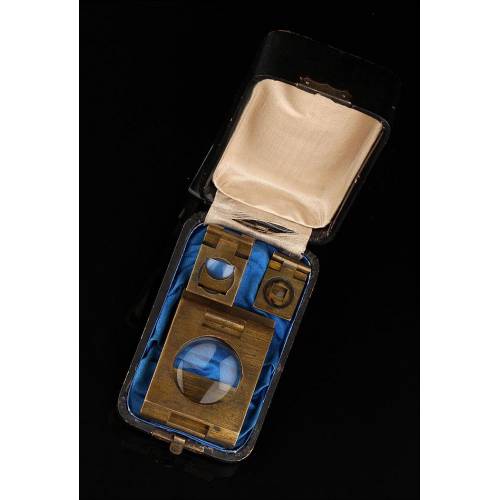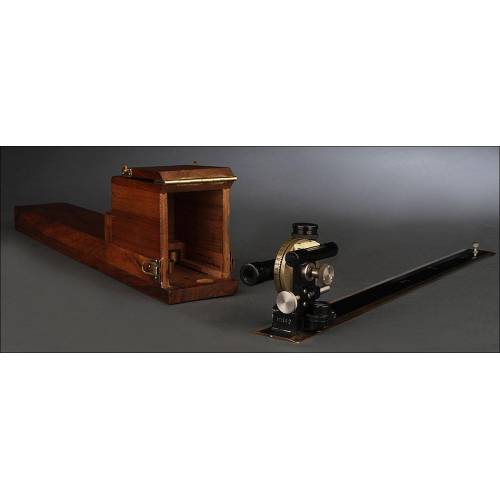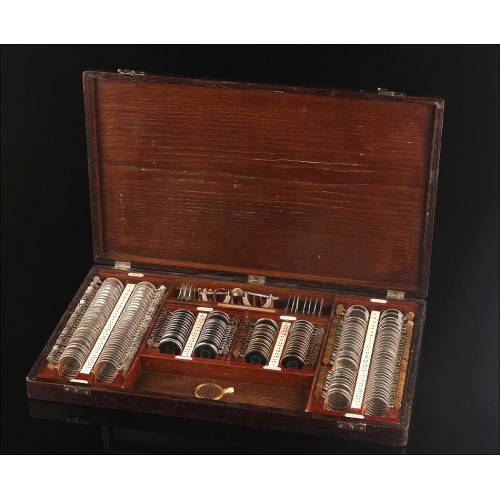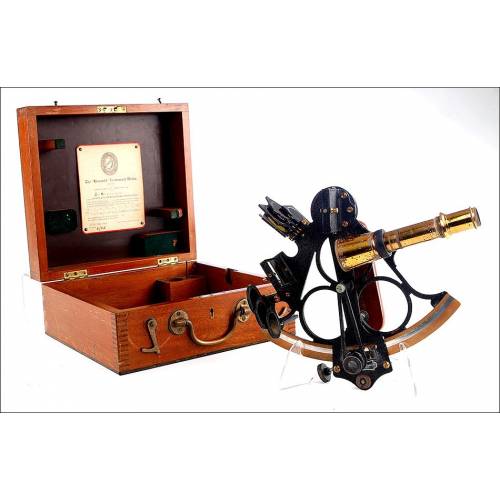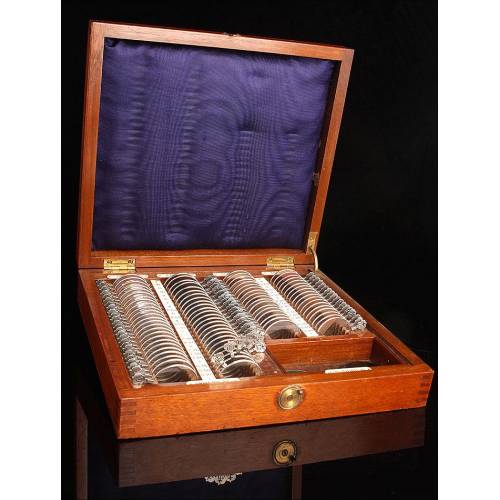J-748
Pocket Glasses, ca. 1900.
Small three-piece pocket spyglass, ca. 1900. In gilt brass and leather. Well preserved.
Sold!
Antique three draw spyglass telescope dating from the beginning of the 20th century, approximately from 1900. This scope is very small, which suggests that it could be a pocket or field spyglass. It is composed of three brass barrels, the biggest one (in the end) being covered of dark brown leather. As well as the antique charm and the beauty of the item, the quality of the view it provides is also very remarkable. The objectives are clean and the far away objects can be seen as the first day. The objective lens of this scope is 3 cm in diameter, and when is fully open the instrument is little more than 40 cm long. The diameter of the lens is very important for a scope: the bigger diameter, the more light comes into the device and the better the visibility is. In this case the lens is not very big because of the small size of the scope, but even so the quality of view is remarkable. The metal is in good condition and the leather that covers the mail barrel is also well preserved. The spyglass scope was invented between 16th and 17th centuries, and it is commonly accepted that the first one was designed by Dutch optical Hans Lippershey. It seems that this scientific designed the first model in 1608 and offered his invention to his countrys army. In the beginning, scopes were used only by sailors and naturalists, but afterwards they became commonly used in other fields. This particular scope is an antique object with a long story behind, but also a beautiful piece that will embellish the most elegant study or the smartest living room. Measurements: 420 mm length (fully open) x 32 mm width.

